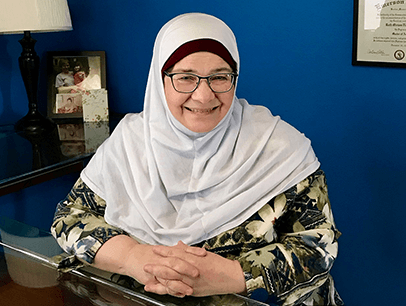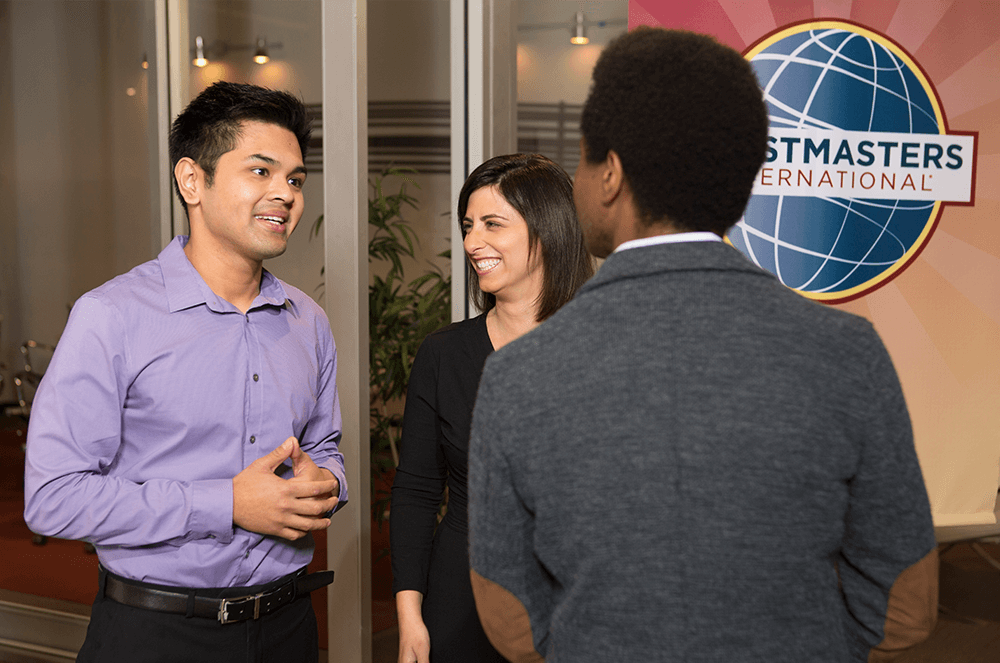
Not everyone takes a linear path in Toastmasters. Some join for a year or two, some remain longer, some stay for decades. Others join the organization, leave because of a life change, and become members again later.
Members and clubs alike can learn a lot from people who take a more circuitous Toastmasters route. It’s worth knowing why they leave, why they come back, and how to encourage them to return.

Evolving Motivations
When Maureen Zappala, now a Distinguished Toastmaster and Accredited Speaker, first became a member in 1999, she wanted to network and grow her side business. She quickly learned Toastmasters was fun. She also got a taste of competing. Right after joining, Zappala participated in the club’s Table Topics® Contest and won.
A few years later, she had a baby. Overwhelmed with having a newborn, she ended her Toastmasters membership. Later, she had a second baby. However, once her two children were in school full time, Zappala rejoined the same club. This time, her motivation for joining was different. She wanted to improve her storytelling skills. She competed in other speech contests and advanced all the way to the final round of the International Speech Contest.
“Even in those years I was gone, some of the people were still the same, and that was a draw [to return],” says Zappala. “Some of my best friends came from Toastmasters.”
After many years, she moved to a different state, leaving Toastmasters again. Even when she was no longer a member, she was a cheerleader for Toastmasters. “I would tell people they need to join,” she says. “I would tell them ‘This will help you. You will meet amazing people, and you’ll learn something.’”
She joined for a third time in 2023, becoming a member of Henderson Toasters in Henderson, Nevada. Zappala’s goals were different once again. She had become a professional speaker and was focused on obtaining her Accredited Speaker credential.

Skills Regained
Mani Shrestha is another example of a recalibrated Toastmasters journey. Like Zappala, he had different motivations when rejoining the organization compared to when he first started. He originally signed up in Nepal when his employer started a corporate club. At that point, he wanted to overcome his fear of public speaking.
Three years later, he left the company for a different job and had to leave his Toastmasters club. Unfortunately, the new organization didn’t have a corporate club. It was also during the COVID pandemic. Shrestha wanted to focus on his in-person speaking skills, so he waited to continue his Toastmasters journey.
In 2024, he started a new job at an employer with a corporate club—WorldLink Toastmasters Club in Lalitpur, Nepal. The Club President urged him to join and help the club grow. Shrestha recognized he could help the club and himself. “Because of the break [in membership], I feel like I lost something,” he says of his speaking skills. He now serves as the club’s mentor and is spreading the word about Toastmasters’ benefits throughout the company.
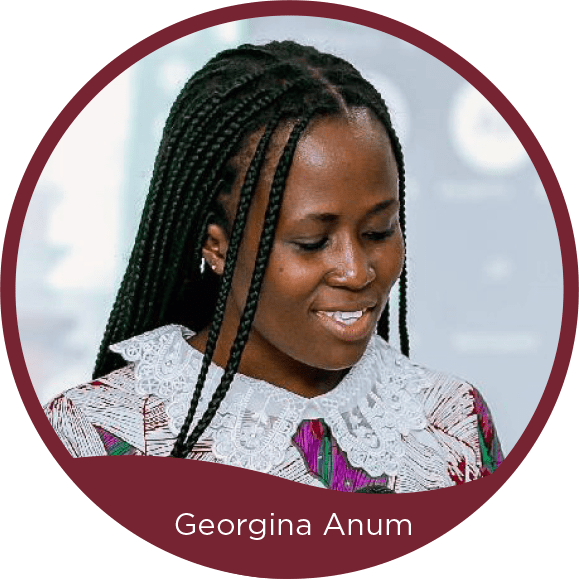
Found Purpose
Georgina Anum first started attending club meetings and events while studying at the University of Ghana. One of her lecturers was a Toastmasters Club President, and he encouraged her to participate in the club. She didn’t know it was Toastmasters or what that meant. She just knew she enjoyed the process.
“My lecturer saw something in me that I didn’t see myself,” says Anum. “He saw leadership in me.”
Eventually, she became an official member of the Accra Toastmasters Club in Ghana and then, with the encouragement of the same lecturer, she took on the Vice President Education role.
After two years, Anum ended her membership. The exchange rate for the dollar was skyrocketing, so the cost of Toastmasters dues was increasing. She also needed to focus on academic work.
It didn’t take long before she realized she was losing her confidence. Anum remembers thinking, “Now that I’m climbing the ladder of my career, I will rejoin to strengthen my communications and leadership skills and take advantage of all the Toastmasters benefits.” So she did. This time, she knew what Toastmasters was and how it could benefit her. Like Shrestha, she is also helping build her club.
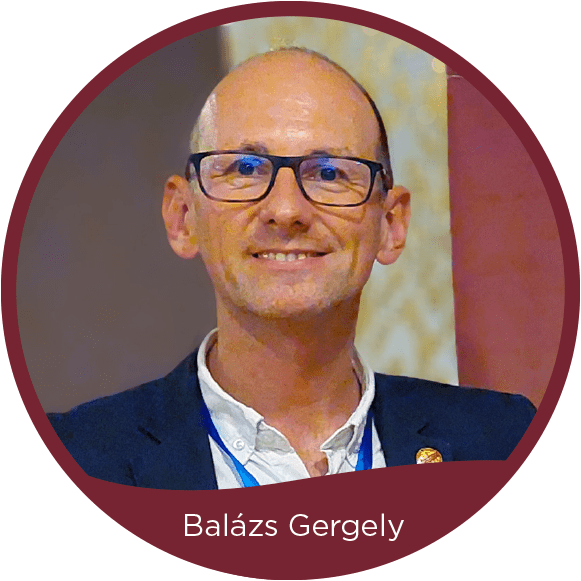
New Perspective
Balázs Gergely, based in Budakalász, Hungary, joined Toastmasters to break out of his shell. “Walking into that room for the first time, I felt a mix of nerves and excitement, but I immediately knew I was in the right place,” he says.
Three years later, he became a father. Gergely left Toastmasters to be fully present for his growing family. Over time, he and his wife had a second child.
Years later, he got a job at a new company and attended an event with colleagues. He found himself sitting next to the corporate club’s Vice President Membership, who convinced him to return to Toastmasters.
Gergely joined Helios Toastmasters in Budapest. This time, he fully embraced club leadership roles, including serving as Club President. “Becoming a father during my time away gave me a deeper sense of responsibility and perspective,” he says. “When I returned, I felt more prepared to contribute meaningfully, not just as a member but as a leader within the club.”
Lessons Learned
Clubs can learn a lot from members who leave and those who rejoin—whether they return to the same club or a different one. Consider these actions to help all your members and make your club stronger.
When Members Leave
- Conduct exit interviews. You may assume members leave because they don’t value the Toastmasters experience or believe they can’t gain anything more from it. But people leave for all kinds of reasons, and it’s important for your club to understand why.
As Toastmasters, we know feedback is essential. Conduct exit interviews with members who are leaving—talk with them to learn why they’re leaving, what their experience has been, what the club’s strengths are, and any ideas they have to make the club experience better.
“We often tell ourselves a story as to why they left,” says Zappala. “An exit interview eliminates any misconceptions.”
Even if you know why a member is leaving, it’s worth taking the time to ask the person for thoughts and ideas. “It’s not that we’re trying to lure them back in,” says Zappala. “We want to know—is it us or life circumstances?” - Make changes based on feedback. Similar to speakers who receive evaluations, once you have feedback from departing members, reflect on it. Consider how the club can apply that input. You could learn invaluable insights about how to address a challenge or receive an idea on how to make something good even better. Feedback helps speakers—and clubs—improve and grow.
- Maintain contact with former members. Many members who leave and return note they felt cut off while they were away. Keep the connections alive and the door open for people to return. Share the link to the magazine. Send them the club or District newsletter. Invite them to special events. Or just check in to see how they’re doing.
“Many people leave Toastmasters not because they’re dissatisfied, but because life takes them in a different direction,” says Gergely. “A warm invitation to reconnect, coupled with reminders of the supportive community and personal growth opportunities, can reignite their interest.”
Even if it’s not possible for them to return to your club specifically, former members might be able to join another club or simply serve as advocates for the Toastmasters program. Think about how you heard of the organization and why you attended your first meeting—maybe even why you joined. Word of mouth and personal testimonials are powerful marketing tools. - Create a scholarship fund. Costs can be prohibitive for some people, whether related to the exchange rate, the fact that they’re students or people who are not working, or myriad other reasons. Consider advocating for a District-level scholarship fund or start one in your club. You can also try to minimize any club fees above the required Toastmasters International dues.
When Members Return
- Ask returning members what their goals and motivations are. When Anum returned, no one asked her why. Recognize that returning members might have different and more specific goals. “Because we all have different reasons for joining Toastmasters, we should identify the members’ needs,” she says. “We can group members by their purposes, and we can get the right orientation and get them involved accordingly.”
- Don’t assume that returning members know, understand, or remember the Toastmasters program and your club’s protocols and procedures. When Zappala rejoined Toastmasters, she found a revised education system. Because she was a previous member, club members assumed she knew everything. But it took her a while to understand the new program. Assess returning members’ understanding of Pathways and be ready to support them.
- Ask members for insights about their time away and their reentry. Returning members offer important perspectives and experience. When they rejoin, they can see the member onboarding experience with a fresh, yet experienced, set of eyes. They can also talk about the value of Toastmasters and what they missed while they were gone.
Like Shrestha, if they participated in a different club in the past, returning members may offer ideas or best practices from a previous club that may strengthen the current one. They can also offer a different and maybe even stronger perspective to prospective members and corporate club sponsors about the value of Toastmasters, since they left and recognized what they were missing enough to return.
“My journey highlights the natural ebb and flow of a member’s life,” says Gergely. “I joined in my early 30s to advance my career, then stepped away to focus on family, and later returned when the time was right. Clubs can thrive by understanding these cycles and creating a welcoming environment that encourages returning members to pick up where they left off.”
Jennifer L Blanck, DTM has more than 25 years of career development and advising experience. She is a member of 5-Star Toastmasters Club in Arlington, Virginia, and AAMC Toastmasters in Washington, D.C., as well as a regular contributor to the Toastmaster magazine. Learn more at jenniferlblanck.com

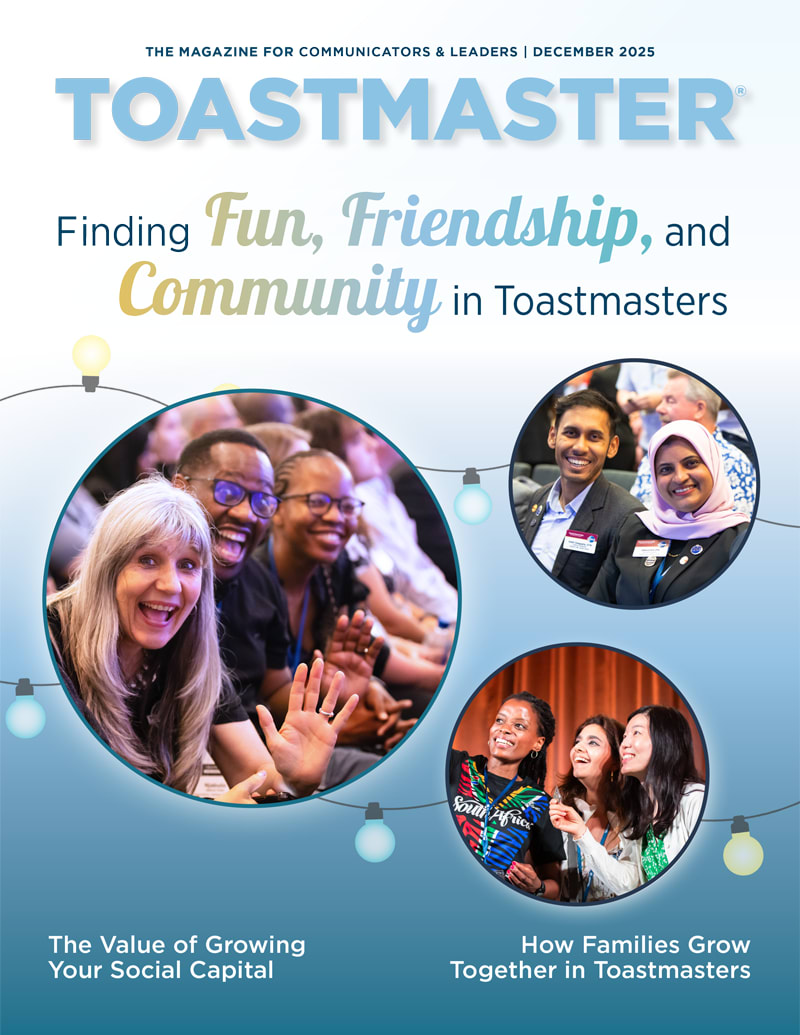

 Previous
Previous

 Previous Article
Previous Article
